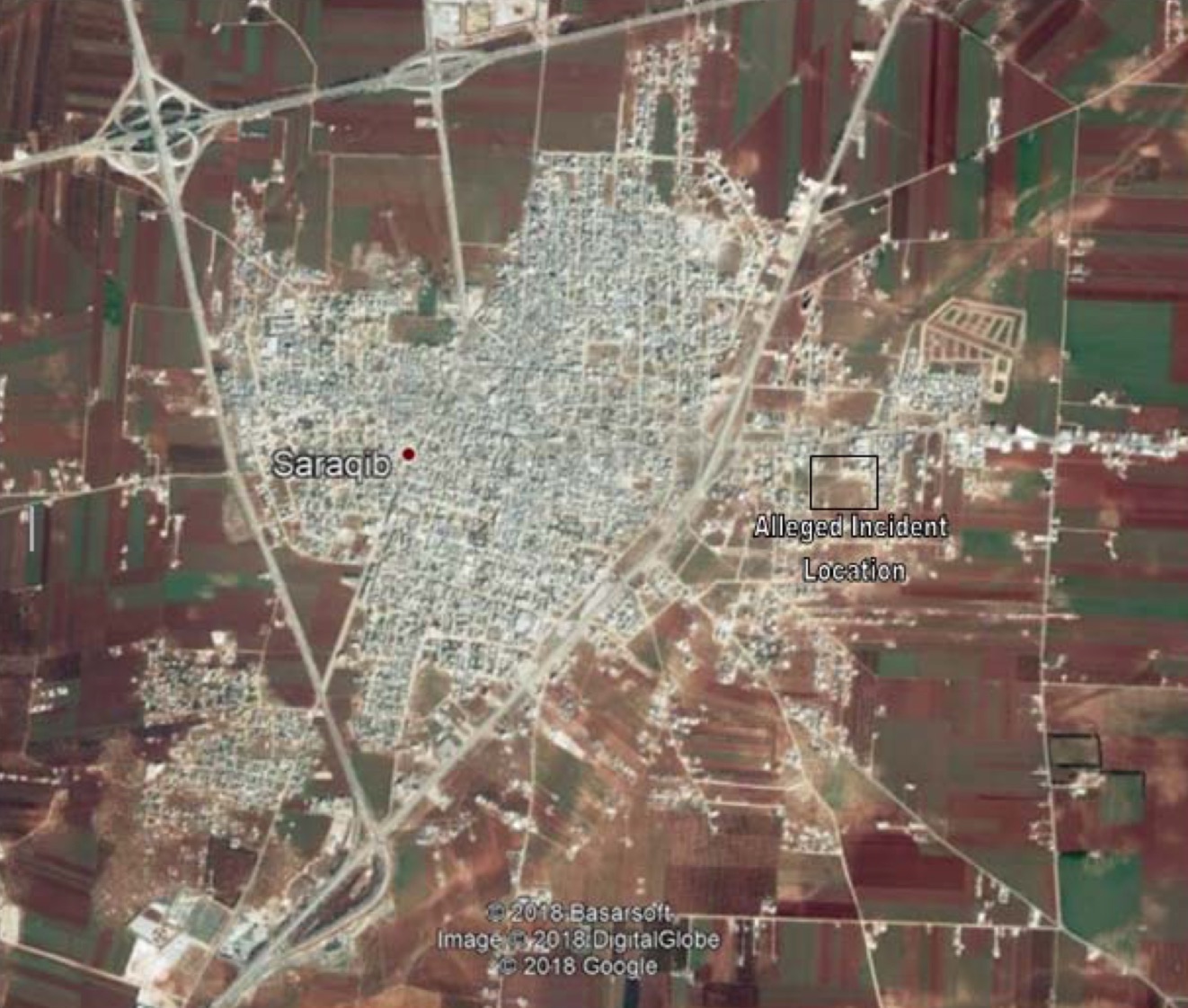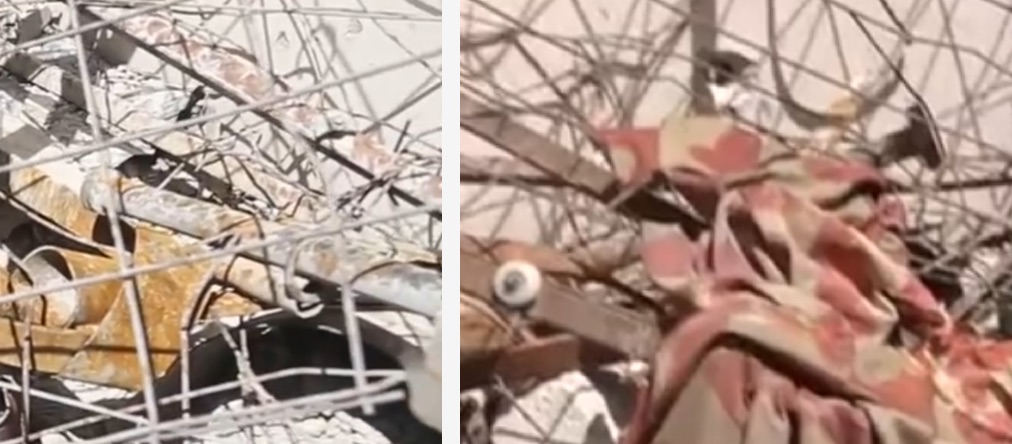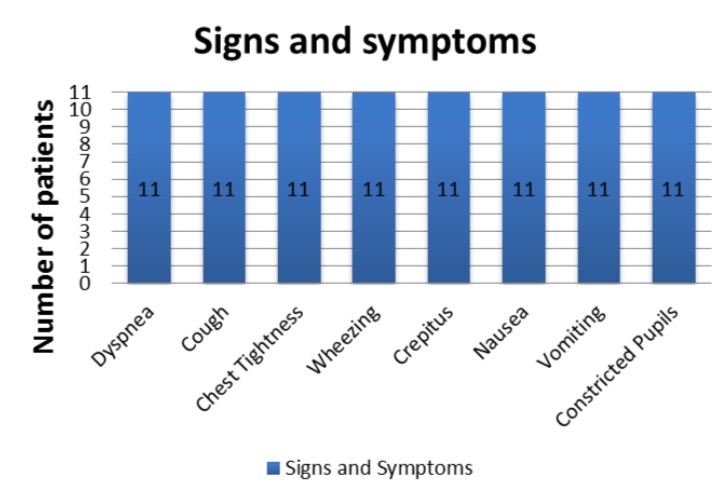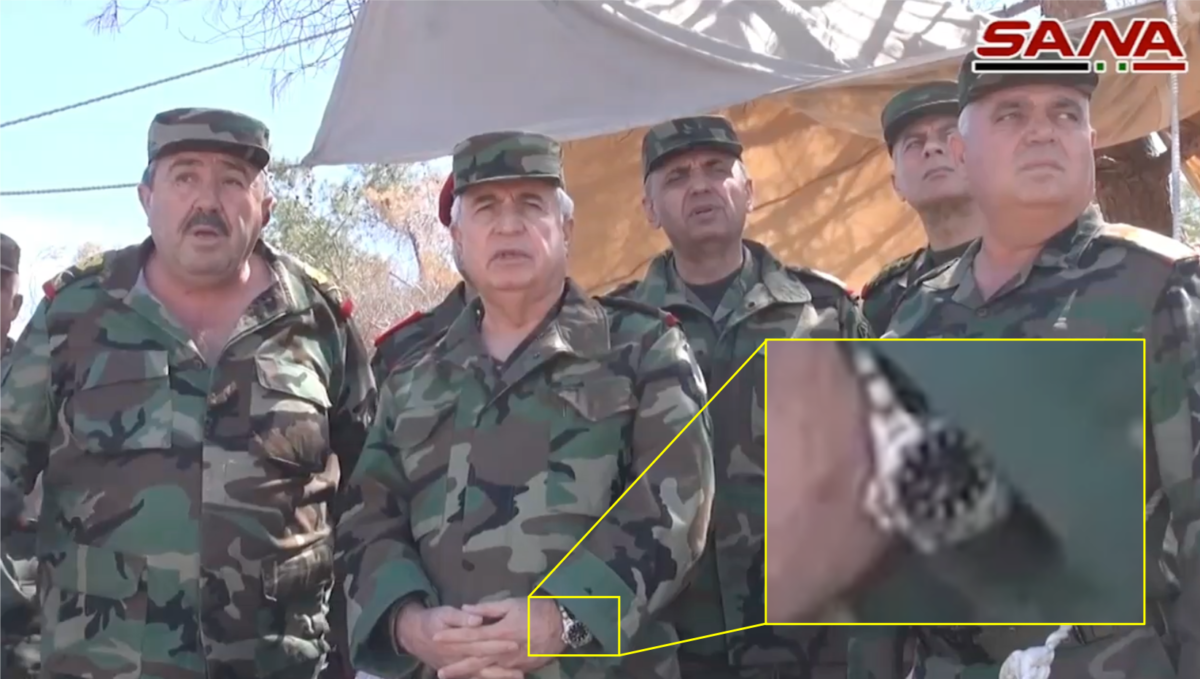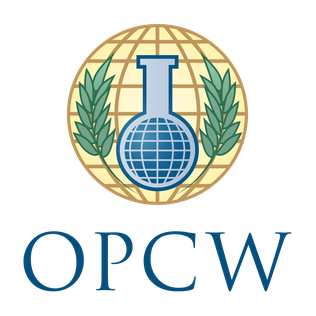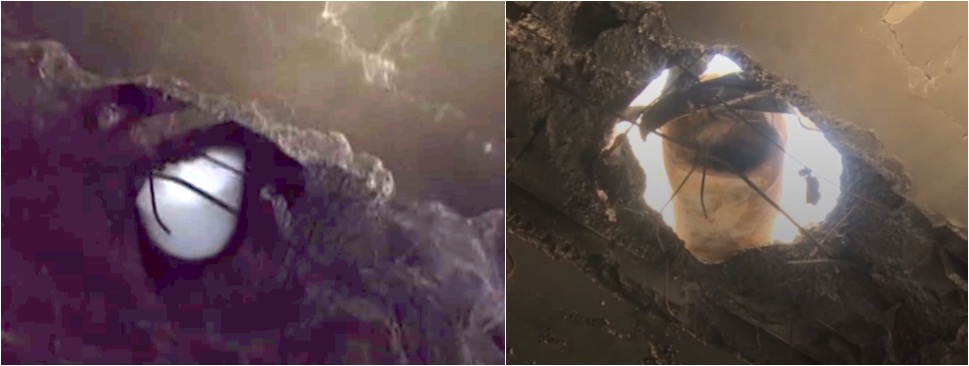What the OPCW-FFM Report on the Saraqib Chlorine Attack Tells Us About the Douma Chemical Attack
Today’s OPCW-FFM report on the February 4 2018 chemical attack in Saraqib, Idlib, reveals not only information about the Saraqib attack, but also the broader use of chemical weapons in Syria, and additional evidence to support the theory Syrian government forces were behind the April 7 2018 chemical attack in Douma, Damascus.
Consistent with Bellingcat’s earlier investigation into the Saraqib chemical attack, the OPCW-FFM report establishes it was likely chlorine was used in Saraqib, meeting the terms of reference for the OPCW-FFM, which is to establish the likelihood of chemical agent use in Syria, not who was responsible for the attack. As with Bellingcat’s earlier report, the OPCW-FFM report includes witness statements claiming a helicopter had flown over Saraqib, followed by the dropping of two munitions, later identified as being chlorine gas cylinders. The impact site of both munitions, according to the OPCW-FFM report, is consistent with the earlier reporting of Bellingcat, on the east side of Saraqib:
While the open source evidence surrounding the attack is consistent with the OPCW-FFM investigation, which instead relied on witness statements and evidence gathered from the scene of the attack, the details of the evidence collected by the OPCW-FFM offers not only a high likelihood of the presence of Sarin or Sarin-like chemical agents at the Saraqib attack site, but allows us to increase our knowledge of the use of chemical weapon by the Syrian government, as well as providing some clues that gives us insight into other chemical attacks in Syria, including the April 7th 2018 chemical attack in Douma.
The OPCW-FFM includes photographs of the remains of the munitions used, chlorine gas cylinders, one with an external structure attached. External structures have been seen on the remains of numerous chlorine bombs used across Syria, including the chlorine bombs used in the April 7th 2018 attack in Douma.
The OCPW-FFM report describes these structures as follows:
One of the cylinders also had an additional structure attached to its side. The attachment comprised metal rings, tubes and flat sheets of metal were visible but significantly deformed and covered with rust.
One particular detail from the munition examined in Saraqib is particularly significant:
This shows a metal tube, with a short metal tube attached to it, which itself is attached to the metal frame surrounding the gas cylinder. This design is identical to the axle and wheel assemblies photographed at the two impact sites of the Douma attack:
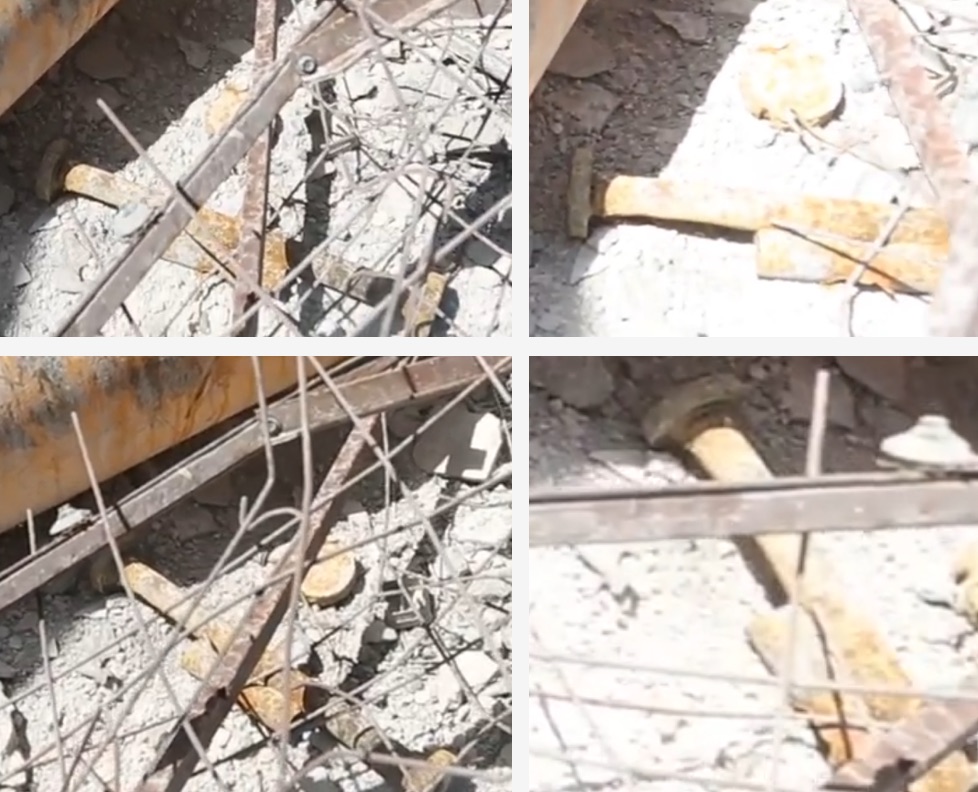
Wheels and axle filmed at the Douma balcony site (source)
On one set of wheels in filmed and photographed in Douma, one wheel has become detached, showing the same sort of attaching end as visible in the Saraqib images:
The presence of these identical features are a clear indication that the gas cylinder used in Saraqib has the same modifications present as the gas cylinders used in the Douma chemical attack months later, and nearly 300km away. As with the Saraqib attack, aircraft spotters reported helicopters heading to Douma, then above Douma, shortly before the attack took place. These are just two of multiple aerial chlorine attacks where modified chlorine cylinders with the same modifications have been documented, and lends even more weight to the argument that the Douma chemical attack was executed by pro-government forces.
While photographs and videos have allowed us to document the use of these munitions over a number of years, what hasn’t been as well documented is the chemistry of these attacks. The latest OPCW-FFM report contains chemical analysis of samples gathered by both the White Helmets and the OPCW-FFM, with consistent results across both sets of samples.
The OPCW-FFM concludes that there was “the presence of two cylinders, which were determined by the FFM as previously containing chlorine;” that there was “environmental analyses, demonstrating the unusual presence of chlorine in the local environment;” and there were “a number of patients who presented for treatment at medical facilities shortly after the incident, and showed signs and symptoms of irritation of tissue, which were consistent with exposure to chlorine and other toxic chemicals.”
But the OPCW-FFM also adds the following in its conclusion:
The FFM also noted the presence of chemicals that can neither be explained as occurring naturally in the environment nor as being related to chlorine. Furthermore, some of the medical signs and symptoms reported were different to those that would be expected from exposure to pure chlorine. There was insufficient information and evidence to enable the FFM to draw any further conclusions on these chemicals at this stage.
Medical symptoms documented after the attack are included in the OPCW-FFM report:
All these symptoms are consistent with chlorine gas exposure apart from constricted pupils. That symptom is typically connected to exposure to organophosphates, including Sarin and Sarin-like agents. By itself the symptoms are odd for a chlorine attack, but the environmental samples provide more relevant information. Samples tested by the OPCW-FFM include Diisopropyl methylphosphonate (DIMP), Isopropyl methylphosphonate (IPMPA aka IMPA), and Methylphosphonic acid (MPA), which are not byproducts of chlorine gas, but have been detected in all Sarin attacks in Syria where chemical analysis was performed by the OPCW, including the August 21st 2013 Damascus attacks, the March 30th 2017 Al Lataminah attack, and the April 4th 2017 Khan Sheikhoun attack. The French National Assessment following the Khan Sheikhoun attack also include analysis of the munition used in the April 29 2013 Sarin attack in Saraqib that detected DIMP in the presence of Sarin.
This combination of symptoms and environmental chemical analysis strongly suggests Sarin or a Sarin-like substance was used in the February 2018 chemical attack in Saraqib. This is particularly interesting when it is alleged in the Douma chemical attack, where the same type of modified chlorine cylinders were used, that not only was chlorine used, but reports from multiple groups, including the Syrian American Medical Society (SAMS), UOSSM, and White Helmets allege an organophosphate (which would include Sarin) or nerve agent was used in the attack, and the US government has also stated they believe both chlorine and a nerve agent, likely Sarin, was used in Douma.
That leaves the unanswered question as to how the nerve agent would have been used in the attack. Experts Bellingcat has contacted agree adding Sarin to a pressurised gas cylinder filled with chlorine would be extremely dangerous, meaning it would be more likely that an external container attached to the munition could have been attached, but as yet no physical evidence exists to support this hypothesis.
If the OPCW-FFM investigation in Douma does confirm the presence of DIMP, IPMPA/IMPA, and MPA it would add weight to the allegation that Douma was not only a chlorine attack, but also a Sarin attack, raising the question of how many other chlorine attacks that have taken place over the last 4 years which also included the use of Sarin. Only a tiny minority of these attacks have been investigated, so there may have been dozens of chlorine-Sarin attacks that were ignored because they appeared just to be yet another in a long line of chlorine attacks. Now it will be too late to ever establish if that was the case, but Douma may still offer some clues to whether chlorine-Sarin attacks are the Syrian government’s dirty chemical weapon secret.
